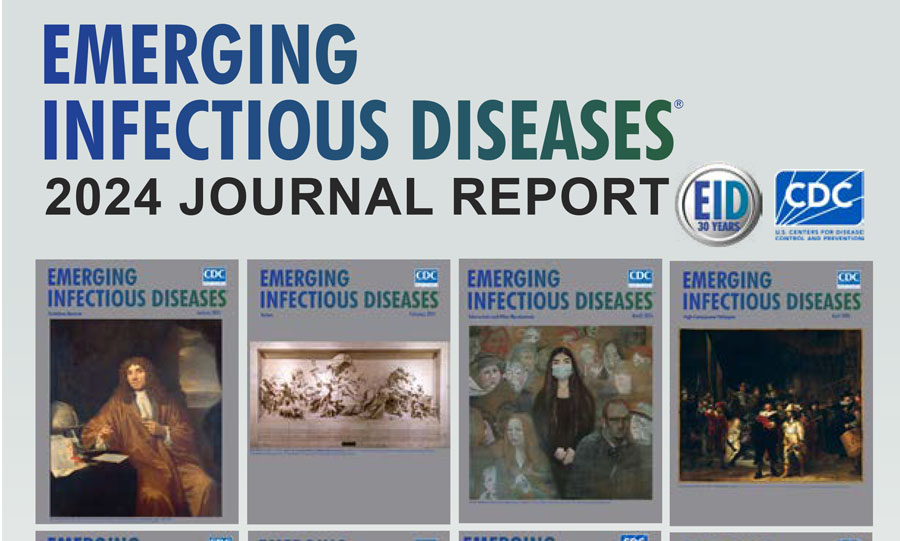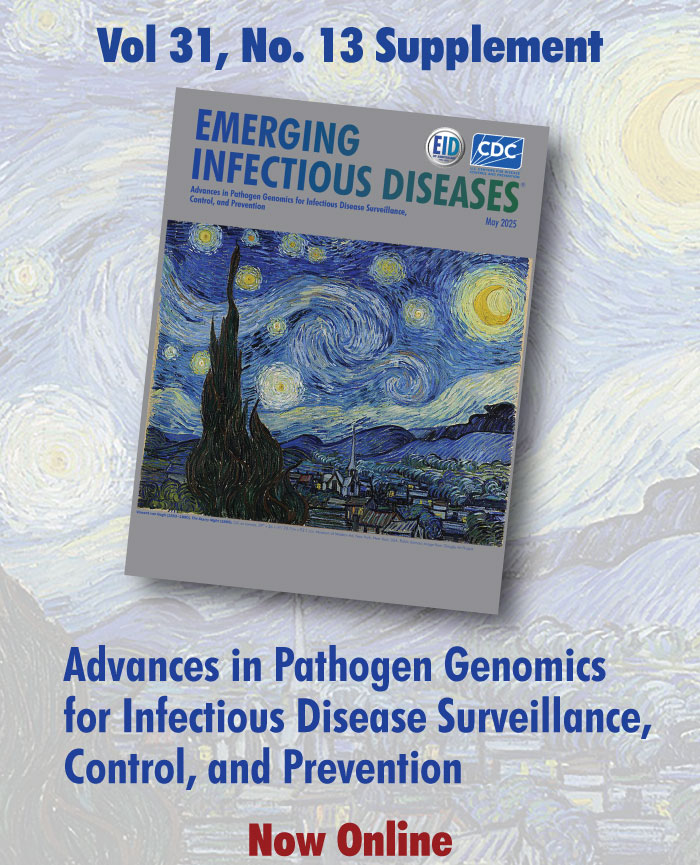Online Reports
Volume 20—2014
Volume 20, Number 10—October 2014
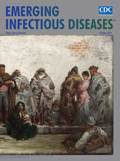
Dengue Expansion in Africa—Not Recognized or Not Happening?
An expert conference on Dengue in Africa was held in Accra, Ghana, in February 2013 to consider key questions regarding the possible expansion of dengue in Africa. Four key action points were highlighted to advance our understanding of the epidemiology of dengue in Africa. First, dengue diagnostic tools must be made more widely available in the healthcare setting in Africa. Second, representative data need to be collected across Africa to uncover the true burden of dengue. Third, established networks should collaborate to produce these types of data. Fourth, policy needs to be informed so the necessary steps can be taken to provide dengue vector control and health services.
Volume 20, Number 8—August 2014
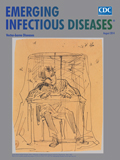
Preparedness for Threat of Chikungunya in the Pacific
Chikungunya virus (CHIKV) caused significant outbreaks of illness during 2005–2007 in the Indian Ocean region. Chikungunya outbreaks have also occurred in the Pacific region, including in Papua New Guinea in 2012; New Caledonia in April 2013; and Yap State, Federated States of Micronesia, in August 2013. CHIKV is a threat in the Pacific, and the risk for further spread is high, given several similarities between the Pacific and Indian Ocean chikungunya outbreaks. Island health care systems have difficulties coping with high caseloads, which highlights the need for early multidisciplinary preparedness. The Pacific Public Health Surveillance Network has developed several strategies focusing on surveillance, case management, vector control, laboratory confirmation, and communication. The management of this CHIKV threat will likely have broad implications for global public health.
Volume 20, Number 2—February 2014
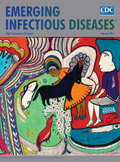
The Centers for Disease Control and Prevention convened panels of anthrax experts to review and update guidelines for anthrax postexposure prophylaxis and treatment. The panels included civilian and military anthrax experts and clinicians with experience treating anthrax patients. Specialties represented included internal medicine, pediatrics, obstetrics, infectious disease, emergency medicine, critical care, pulmonology, hematology, and nephrology. Panelists discussed recent patients with systemic anthrax; reviews of published, unpublished, and proprietary data regarding antimicrobial drugs and anthrax antitoxins; and critical care measures of potential benefit to patients with anthrax. This article updates antimicrobial postexposure prophylaxis and antimicrobial and antitoxin treatment options and describes potentially beneficial critical care measures for persons with anthrax, including clinical procedures for infected nonpregnant adults. Changes from previous guidelines include an expanded discussion of critical care and clinical procedures and additional antimicrobial choices, including preferred antimicrobial drug treatment for possible anthrax meningitis.
In August 2012, the Centers for Disease Control and Prevention, in partnership with the Association of Maternal and Child Health Programs, convened a meeting of national subject matter experts to review key clinical elements of anthrax prevention and treatment for pregnant, postpartum, and lactating (P/PP/L) women. National experts in infectious disease, obstetrics, maternal fetal medicine, neonatology, pediatrics, and pharmacy attended the meeting, as did representatives from professional organizations and national, federal, state, and local agencies. The meeting addressed general principles of prevention and treatment for P/PP/L women, vaccines, antimicrobial prophylaxis and treatment, clinical considerations and critical care issues, antitoxin, delivery concerns, infection control measures, and communication. The purpose of this meeting summary is to provide updated clinical information to health care providers and public health professionals caring for P/PP/L women in the setting of a bioterrorist event involving anthrax.
